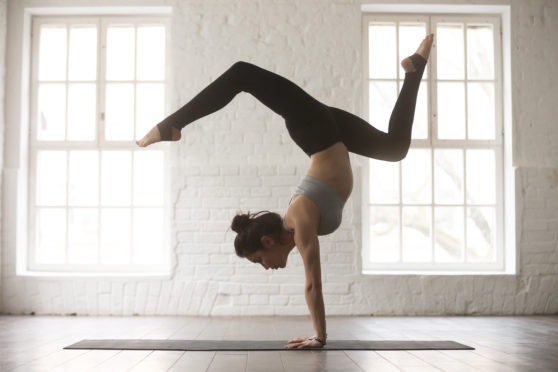
Many of us will experience some degree of joint degeneration or osteoarthritis as we get older, and Valentina Roffi, a clinical specialist physiotherapist at SprintPhysio.co.uk, says musculoskeletal problems are the most common health issue among our ageing populations.
But while the word “degeneration” might sound alarming, it’s often not the losing battle it can sometimes seem, and Roffi stresses it’s a myth that joint problems will always “inevitably get worse”.
For some people, osteoarthritis – which develops after the cartilage lining the joint wears down, leading to inflammation, stiffness and pain – can be chronic and severe, and pain management treatment and even surgery can be a necessary reality in some cases.
But a lot of the time, there’s lots we can do lifestyle-wise, to help protect and boost the health of our joints – both before and after degeneration develops. Here are five ways to help future-proof your joints…
Get niggles checked early
Don’t wait until you’re in absolute agony and can no longer put any weight on that dodgy knee or hip to seek advice. Tackling things early can often prevent them getting worse.
If you’re experiencing ongoing symptoms involving multiple joints, see your GP – they may need to check whether there’s anything else going on. If it’s just one joint or muscle strain and you suspect it’s a sports injury, book in with a physiotherapist.
“Our advice is to seek help from a professional who can assess your specific needs with regards to strength, flexibility and general fitness, and address them with a tailored programme,” says Roffi. “This can be a combination of manual therapy and exercise, or just exercise alone. It is important to respect our bodies and their physiological needs.”
Keep moving
If you’ve got an acute injury or flare-up, resting can be very important. However, while it’s easy to think we need to avoid being active if we have aches and stiffness, this can be counterproductive and might make things worse. If you’re unsure or starting a new exercise regime for the first time, seek advice from your doctor or physio, and always listen to your body.
Generally speaking though, when it comes to keeping joints healthy, we need to be regularly moving our bodies. This means avoiding sitting in one position for too long (desk workers and TV/gaming addicts, take note) and getting regular exercise, even if it’s just daily walks.
Be stretch-savvy
A healthy degree of flexibility is important – but so too is remembering we’re all different, says Sprint Physio’s Anj Periyasamy. So, rather than getting too competitive in that yoga class, focus on listening to your own body. Healthy flexibility is about having a good range of motion and functional mobility – it’s not about forcing yourself into the splits or a crazy back bend so you can wow your Instagram followers. (Even yoga teachers can end up with injuries!)
Strengthen your core
Prioritising your core can be life-changing in the battle against pain, stiffness and caring for our joints. It improves posture, balance and helps take the strain off our spines.
We’re not talking about a bulging six-pack though. It’s about working all the big core muscles around the torso, back, abdomen and hips, as well as all the tiny stabiliser muscles around the spine and pelvic floor. Pilates is excellent for this, but it’s important to build up slowly and seek guidance if you have a history of pain and joint problems. Your physio will be able to suggest simple exercises you can do at home to get going safely.
Think joint-friendly nutrition
Rob Hobson, head of nutrition for Healthspan, says nutrition can’t be overlooked in joint health. A varied, balanced diet is always the number one rule, but Hobson also suggests ensuring you get plenty of omega 3 (found in oily fish, nuts and seeds), calcium (found in dairy products, green leafy veg, soya beans, tofu and fortified dairy alternatives), magnesium and vitamin D (most of our vitamin D is produced from sunlight, so experts recommend everyone in the UK and Ireland takes a supplement during autumn and winter months, when there isn’t enough sunlight to meet our needs).
Hobson notes people may also want to avoid “inflammatory foods” – such as red and processed meats, margarine and deep-fried takeaway foods – and pack in plenty of “anti-inflammatory foods”, like extra virgin olive oil, oily fish, fruit and veg, nuts and seeds.

Enjoy the convenience of having The Sunday Post delivered as a digital ePaper straight to your smartphone, tablet or computer.
Subscribe for only £5.49 a month and enjoy all the benefits of the printed paper as a digital replica.
Subscribe